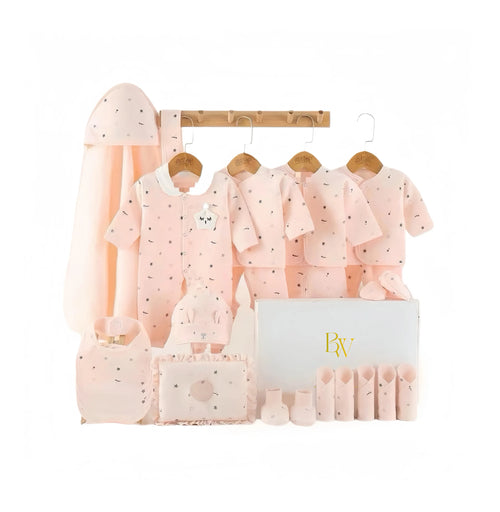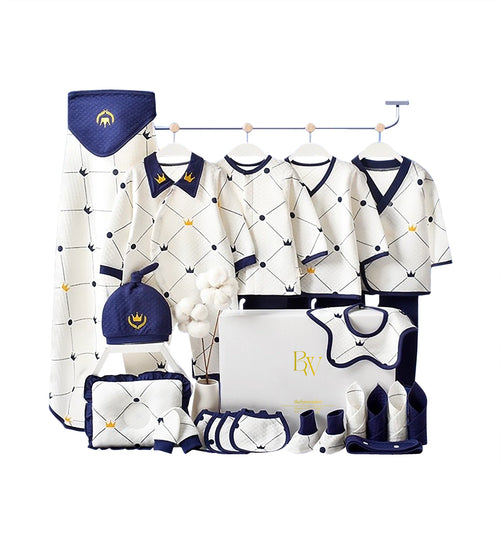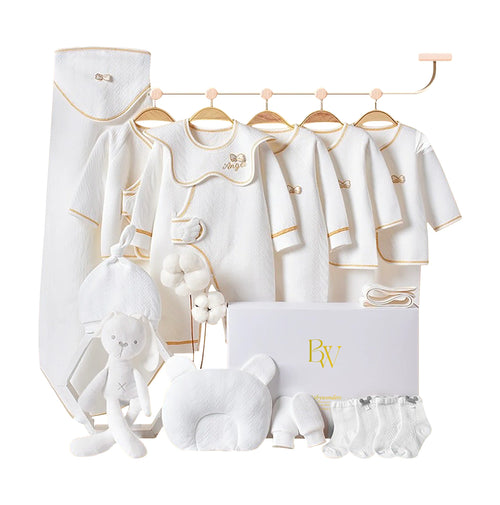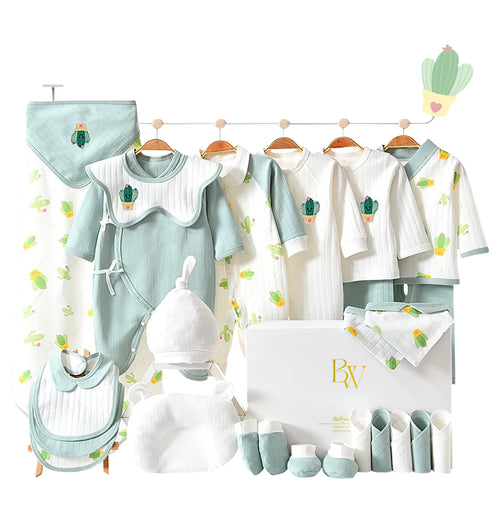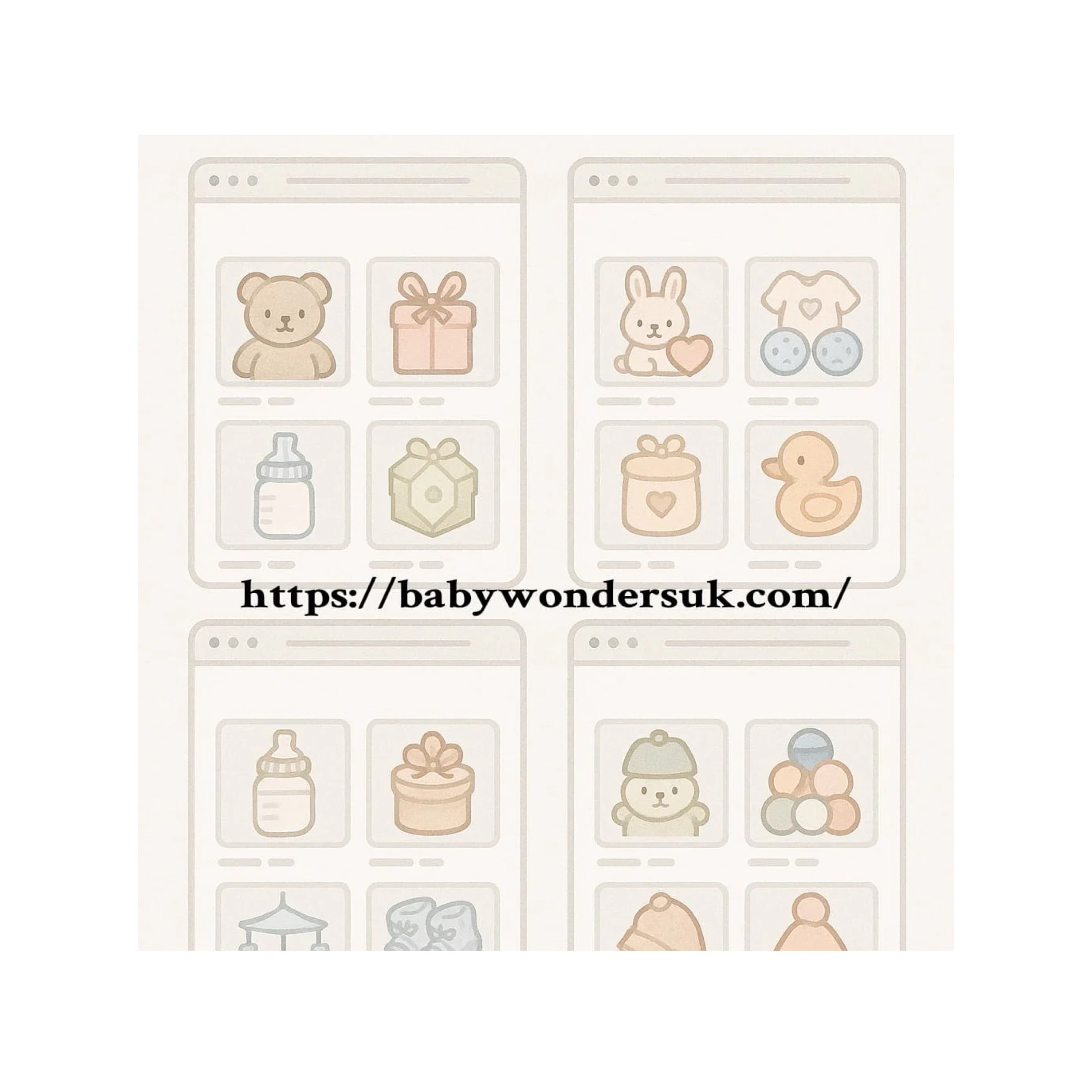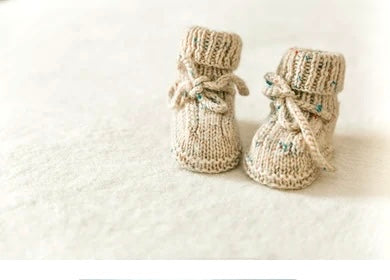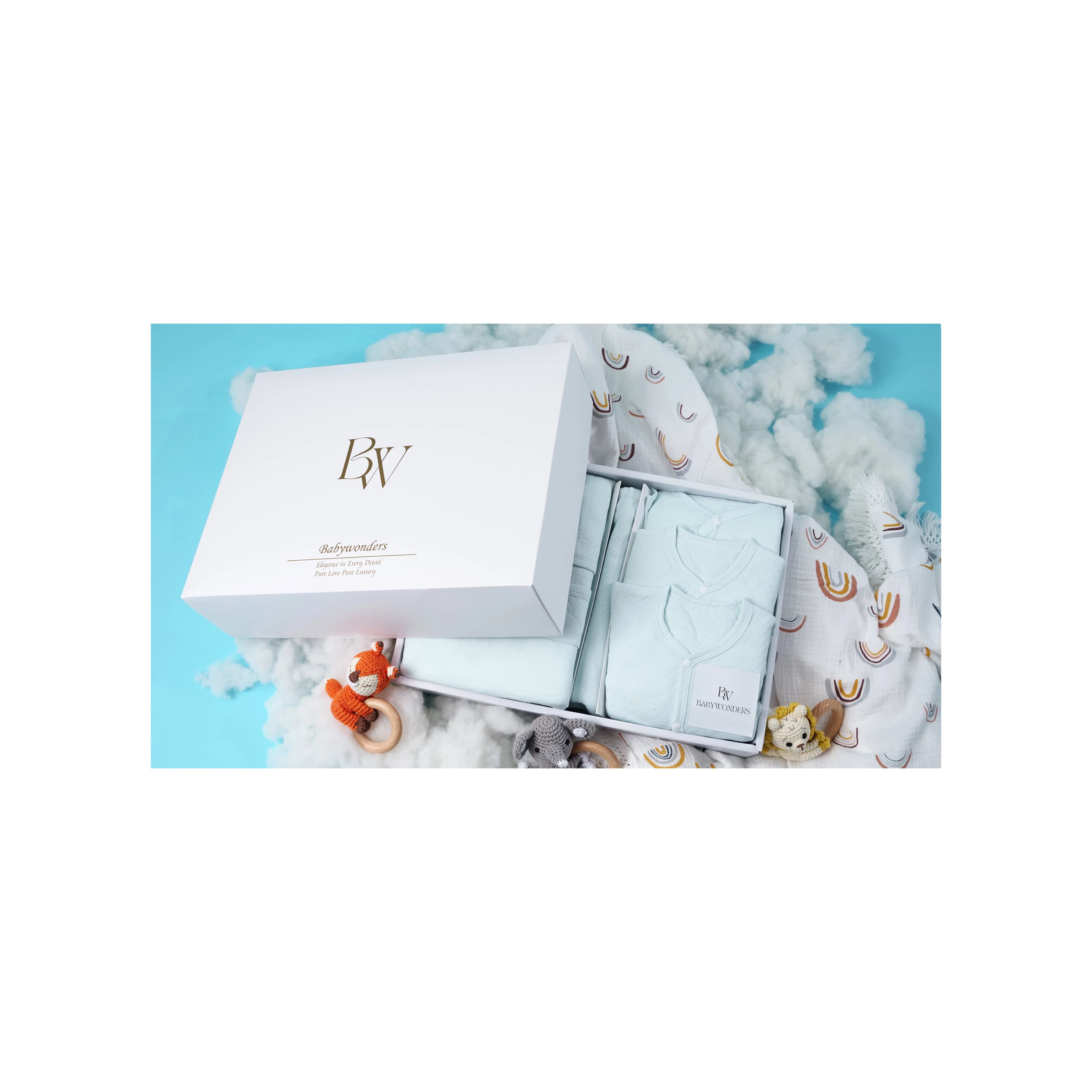When new parents welcome their first child, the journey gets exciting, yet choosing baby clothing often overwhelms them. The purpose of baby clothing extends past style because it needs to deliver comfort, safety, and practicality for your tiny tot. Babies with delicate skin combined with fast body development and regular diaper adjustments demand functional garments that combine convenience features with a fashionable appearance. The guide provides essential breakdowns about fabric choices with safety features that help users make educated decisions. Knowledge about these essential factors will simplify your decision-making process while ensuring your baby remains both healthy and content.
Safety First: Avoiding Hazards in Baby Clothing
The selection of baby clothing demands absolute safety as the primary concern. Keep your baby safe by steering clear of items with little buttons and beads in addition to loose threads. Select clothing that fits snugly but isn't restrictive since loose clothes increase entanglement risks, and never choose drawstrings near the neck or waist area. Take baby clothing that comes equipped with snaps and zippers that have protective flaps to avoid pinching the skin. Flame-resistant sleepwear stands as the preferred choice for infant use, but items should maintain minimal tags and rough seams to prevent skin discomfort. Look for fabrics that have received either OEKO-TEX or CPSIA certifications because they prove the materials meet required safety standards. Check your child's garments often for damage and eliminate clothing with holes or defective zippers from use.
Choosing the Right Fabric for Comfort
The fragile skin of infants needs gentle, breathable materials to interact with. Natural fabrics composed of 100% cotton or bamboo or organic blends are perfect choices because they both draw moisture from the skin and help maintain proper body temperature while protecting against allergies. Synthetic fabrics, particularly polyester, hold heat and create skin irritation. During colder months, opt for thermal knits or fleece-lined clothes that stay lightweight enough to avoid heat accumulation. Seamless construction together with flatlock seams on clothing minimizes chafing, and tagless labels enhance wearing comfort. Before wearing new clothes, you should wash them with hypoallergenic detergent to strip away chemical agents and break down fabric stiffness. Soft, stretchy fabrics should be your first choice when you need outfits that allow your baby to move freely through onesies and leggings.
Practicality Matters: Easy Dressing and Care
Newborns need many outfit swaps throughout the day, so parents must pick functional clothing choices. Dressing your newborn becomes easier with items that have wide necklines or snap buttons or zipper closures, especially for middle-of-the-night changes. Modern parents who need convenience will appreciate magnetic closures. Pick kimono tops or wrap clothing since these designs can prevent belting items above a baby's head. Your search for diaper accessibility should lead you to snap-bottom onesies along with elastic-waisted pants. There are a variety of baby pants, so choose wisely. Babies easily stain their clothing, so parents need to choose machine-washable fabrics, which also need to be durable. Keep away from products that require hand washing as well as intricate decorations.
Sizing Considerations for Growing Babies
Babies grow quickly, but you should consider selecting clothes that provide adequate fit while lasting long. Safety requires clothing to fit well, but excessively tight garments will hinder your baby's movement. Items with adjustable features that include stretchy waistbands along with roll-up sleeves and fold-over mittens work best. Brand-specific size charts differ from one another, which necessitates regular measurements of your baby's height and weight. Stretch your budget by purchasing larger sizes than necessary, although avoid selecting sizes that are overly big. Newborns between zero to three months old typically weigh up to twelve pounds and will fit into “0-3 months” clothing sizes. “3-6 months” clothing fits infants weighing up to sixteen pounds. Footed sleepers need enough space for toes to move, while onesies require coverage of the diaper area without exposing it.
Seasonal Adaptability: Dressing for Weather Changes
The practice of dressing your baby in multiple clothing layers helps adjust to seasonal temperature fluctuations. The winter dressing plan begins with base layers followed by fleece jackets paired with soft hats and warm crew socks. The summer wardrobe should include cotton rompers together with sun hats and swimwear using UV-blocking materials to provide protection and coolness for your baby. Babies need help regulating their temperature, so avoid thick clothing layers; instead, monitor your baby's neck area and back for signs of sweating or feeling too hot. You can use a baby sleepsuit for better comfort. Timing your baby's outfit selection with sleeveless bodysuits and dresses that permit sleeve attachment provides instant adaptations for changing weather conditions. When it rains, you need waterproof outer garments and material that wicks moisture away to stop rashes from developing in hot conditions.
Style and Functionality: Balancing Aesthetics with Needs
Your baby's comfort requires you to choose functional designs even though cute patterns and fashionable styles seem appealing. Neutral color palettes alongside gender-inclusive designs provide versatile look options that can serve babies both as present outfits and future siblings' apparel and hand-me-downs. Your baby will enjoy crawling and playing better if you choose stretch fabrics over tight-fitting clothing such as jeans or stiff dresses. Gripped seamless socks keep your baby safe from accidental sliding, and mittens shield against harmful scratches to their skin. Using versatile pieces for your clothes gives you the ability to make many different outfits from lesser items. You should save your trendy clothing items for special events because practical everyday clothing will better suit your needs in daily life.
Conclusion
You must decide between clothing that offers safety features along with comfort and functionality when selecting baby outfits. Your baby's development and skin sensitivity require clothing made with soft, breathable fabrics as well as adjustable sizes with secure fasteners. Check for safety certifications on every piece of clothing you buy because you should also prevent potential choking hazards. The combination of seasonable layering with materials that can be washed by machines simplifies daily maintenance while purposeful designs provide comfort during both playtime and rest time. These essentials will help you create a wardrobe that provides comfort and safety for your baby. The most effective outfits protect your baby's well-being as they grow older while exploring the world and taking naps and crawling. Happy shopping!
